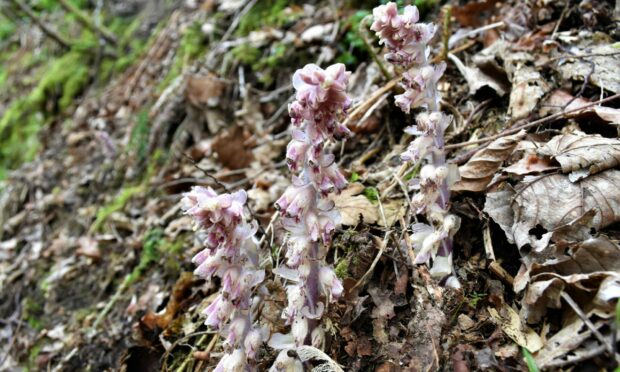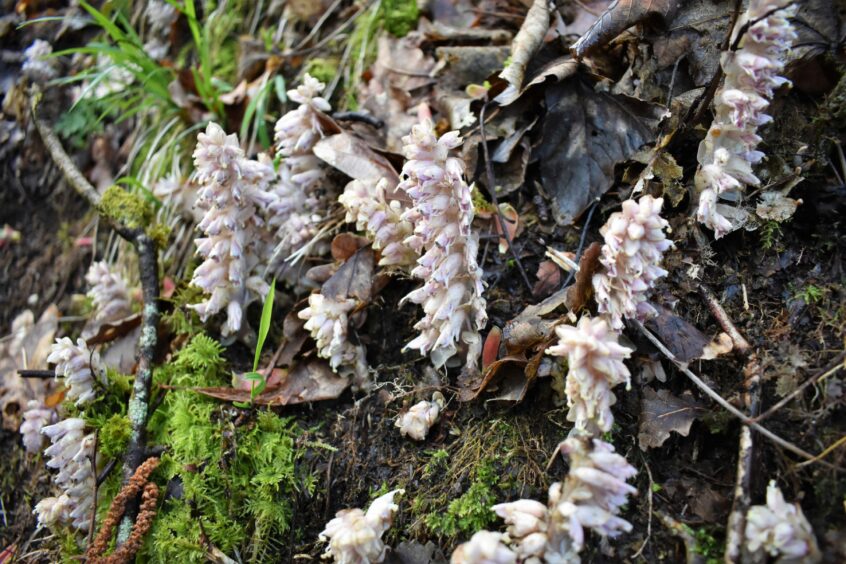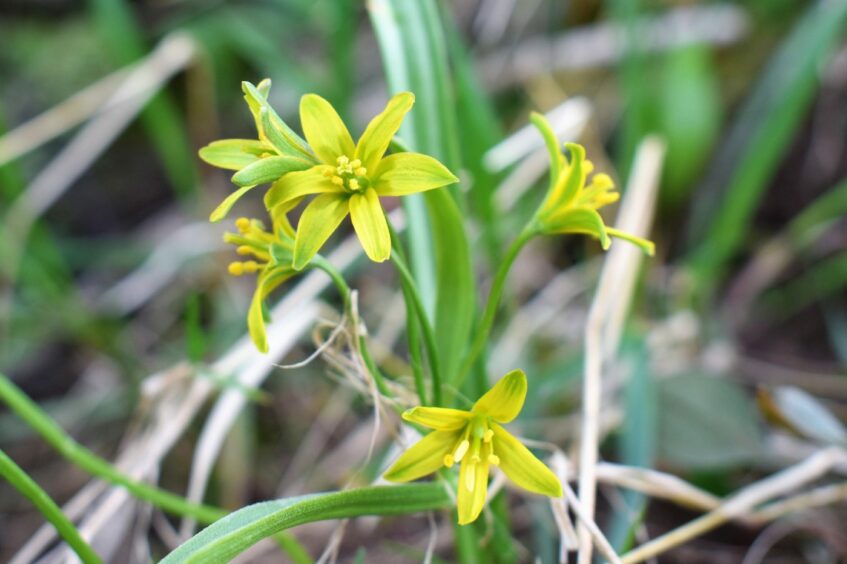The ghostly pale pink spikes seemed to have emerged overnight in this shady corner of my local wood, like dead men’s fingers pointing heavenwards from the dark soil.
Their aura is primeval and mysterious – a plant, but not as we know it, and one which for some inexplicable reason instils a sense of unease.
I am not sure why this should be so, but I imagine it is because of its unfamiliarity, representing a glimpse into the unknown.
What is the plant?
The plant is toothwort, a most unusual species that lacks both leaves and chlorophyll and with a distinct deathly pallor, which is perhaps the reason it used to be known as the ‘corpse flower’.
Toothwort’s scientific name, Lathraea, derives from the Greek ‘lathrios’ or ‘clandestine’ because for most of the year the plant remains out of sight, hidden in the dark, forbidding depths of the earth.
Rather than gaining sustenance from the life-enhancing spring sunshine, toothwort is a parasite, deriving water and nutrients by tapping like a sucking vampire into the roots of hazel, elm and other trees.
The flowers and scales on the plant resemble molars, which could be the derivation of its modern name, and it may even have been used as a treatment for toothache.
Belief in treatments
There was the popular belief in the past that a plant would be effective for treating medical conditions to which it bore some resemblance.
This is well-illustrated by the familiar early spring flower, lesser celandine.
The plant was once known as ‘pilewort’ because of its reputed properties as an effective remedy for haemorrhoids, with the knobbly roots apparently bearing a strong resemblance to the convoluted appearance of piles.
Whilst this was obviously a most tenuous treatment, for the sufferer there may have been a soothing placebo effect, a comfort in the mind that the condition was being treated.
Every year, this cluster of toothwort appears in the same spot in my wood in late March and which has usually withered by the end of April.
Toothwort is a fleeting ghost in the wind and scarce in Scotland, and I have only ever encountered it in this damp steep-sided wood close to my home.
Another rarity
There is another scarce spring plant I will be keeping an eye out for over the next fortnight.
It is yellow star-of-Bethlehem, an exquisite little flower, which grows from a tiny bulb and which is so unassuming and understated it is easy to miss.
Several years ago, I found a cluster of these yellow-petalled gems growing on the bankside of my local river in late March.
Sadly, it has never reappeared since, although this species is shy to flower and may not to do so every year.
I have not given up hope on rediscovering yellow-star-of-Bethlehem and will be scouring the riverbank once more in the hope the flowers will magically materialise.
If I succeed, it will be a joyous occasion, although often the anticipation of finding something rare and beautiful is almost as satisfying as encountering the real thing.




Conversation